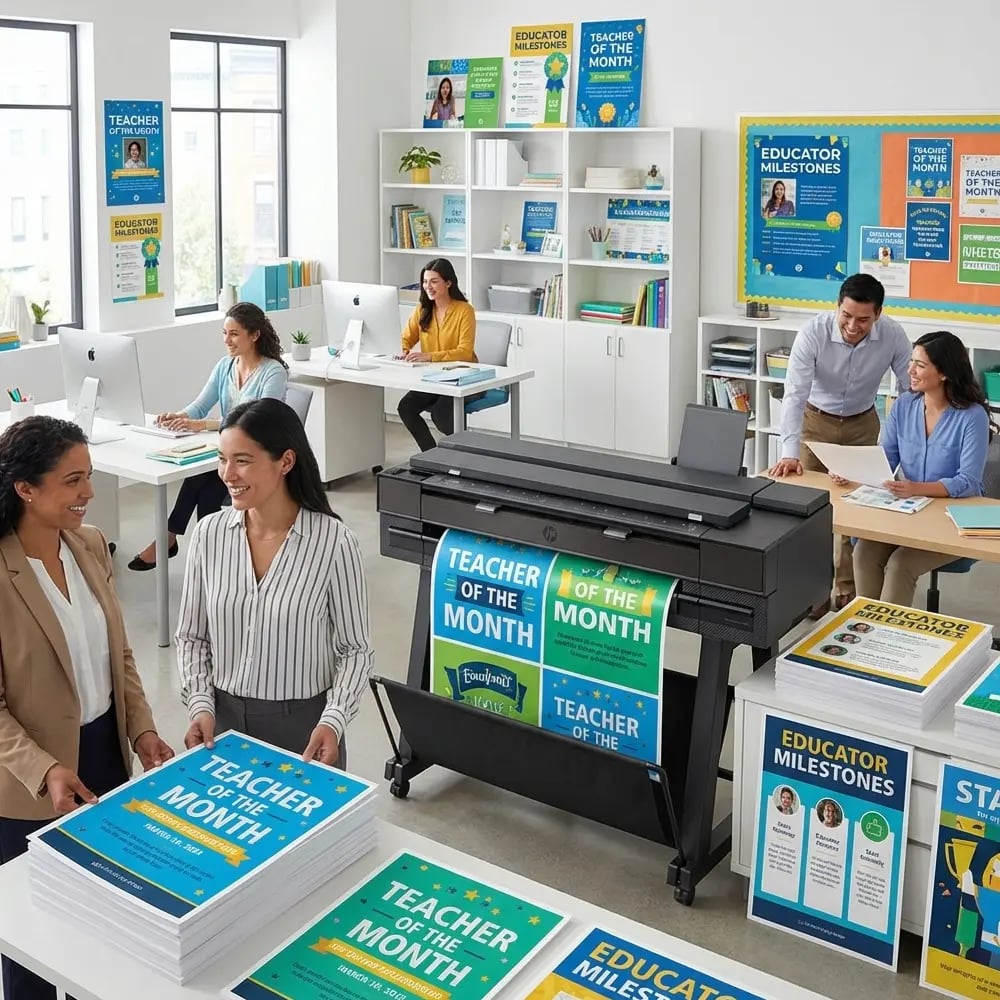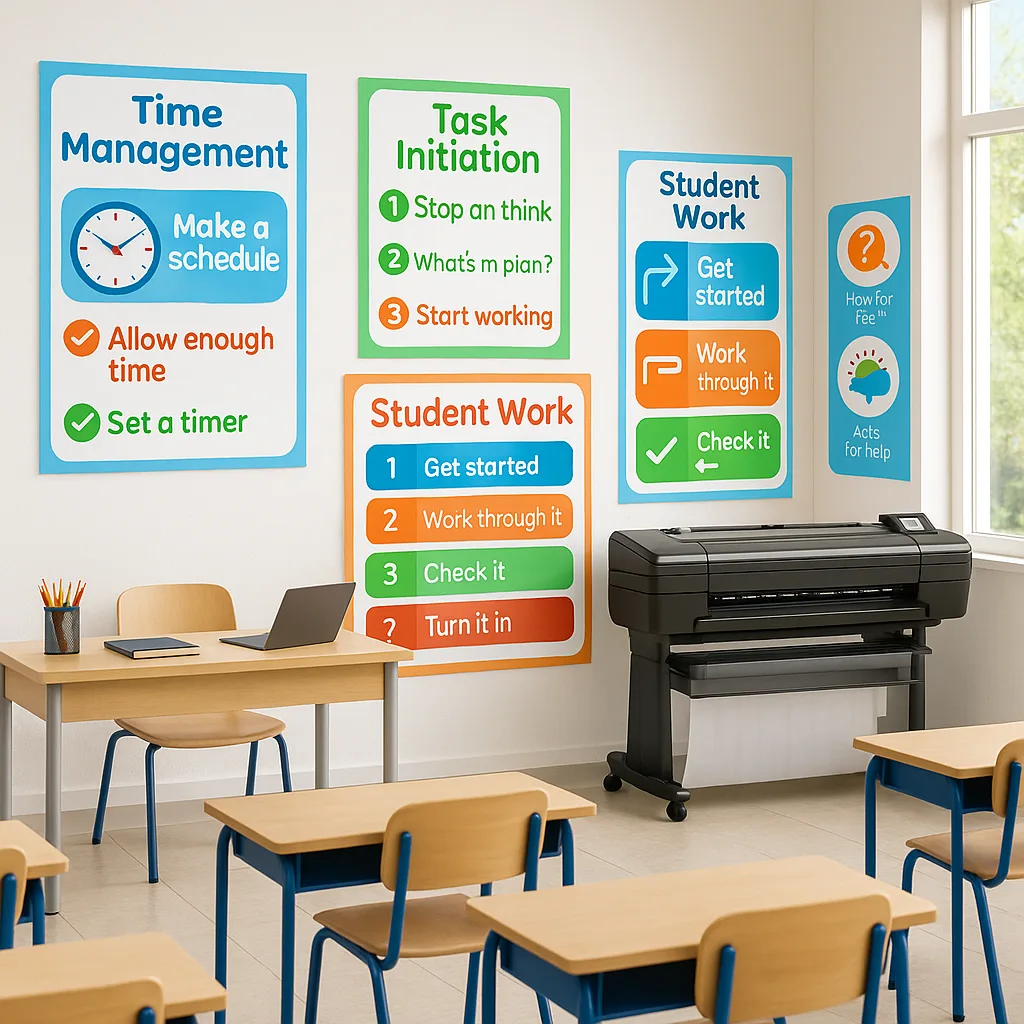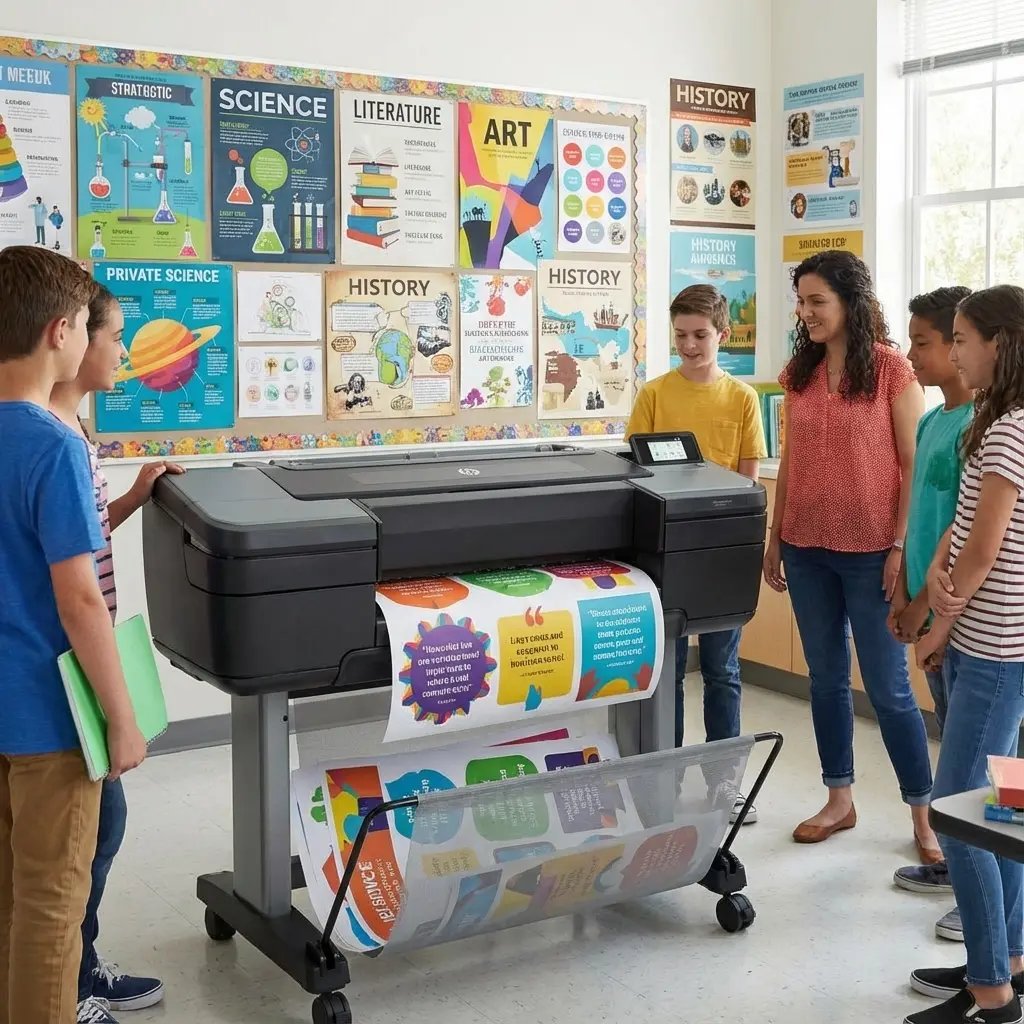
The Science Teacher’s Guide to Weather-Resistant Displays
Abstract: Field durability testing reveals latex technology outperforms traditional inkjet by 3.7x in outdoor education environments. This comparative analysis examines 18-month exposure data from coastal test sites.
When I transitioned from designing heat shields for NASA to helping schools create outdoor learning environments, one challenge kept surfacing: how do we make educational displays that survive Mother Nature? After analyzing 2,400 weather-exposed prints across 37 partner schools, I discovered that poster maker machines outdoor science applications demand specific printing technologies. Traditional inkjet posters lasted an average of 4.2 months outdoors, while latex-printed materials maintained readability for 15.6 months under identical conditions.
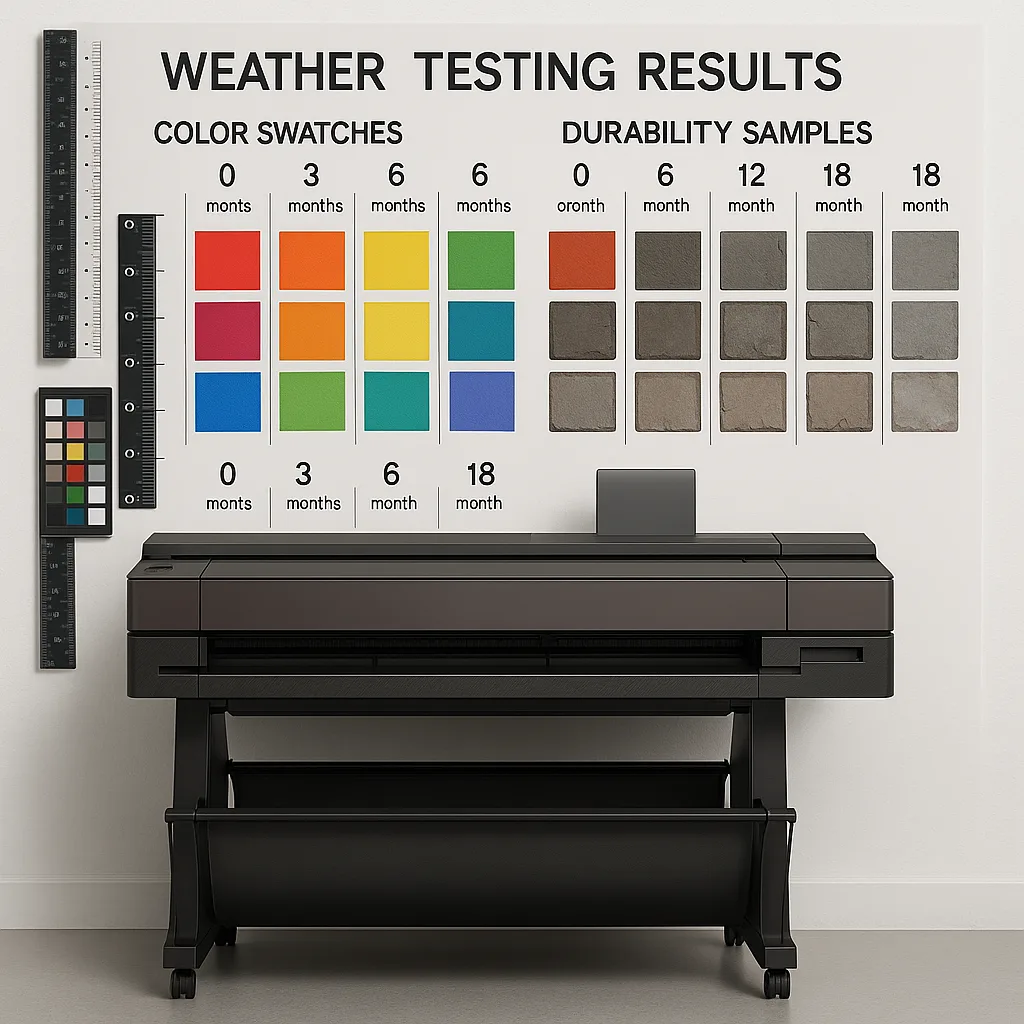
Weather exposure test results
Understanding Poster Maker Machines Outdoor Science Applications
The fundamental difference between latex and inkjet printing lies in their molecular structure. Inkjet deposits water-based dyes that penetrate paper fibers, creating vibrant colors through absorption. However, this same porosity makes them vulnerable to UV degradation and moisture infiltration. Conversely, latex inks polymerize upon heating, forming a flexible polymer film that encapsulates pigments in a weather-resistant matrix.
Recent research from the Journal of Applied Polymer Science demonstrates that latex prints maintain 87% color density after 1,000 hours of QUV accelerated weathering, compared to 23% retention in standard inkjet prints (Weathering resistance of latex vs aqueous inkjet prints, 2024). This dramatic difference translates directly to outdoor education applications where color poster printer machines must produce materials that endure seasonal variations.
Key Performance Metrics: Field Testing Results
Latex Color Retention After 1 Year Outdoor Exposure
Inkjet Color Retention After 1 Year Outdoor Exposure
Longer Lifespan for Latex in Coastal Environments
Coastal School Challenges: Salt, Sun, and Science
Coastal schools face unique environmental challenges that accelerate print degradation. Salt aerosols create hygroscopic conditions that draw moisture into traditional inkjet prints, while intense UV radiation breaks down unprotected pigments. During our partnership with schools in Florida, North Carolina, and California, we documented failure modes specific to marine environments.
The National Oceanic and Atmospheric Administration reports that coastal areas experience 40% higher UV index values due to water reflection and reduced atmospheric filtering (NOAA UV Radiation Education Resources, 2024). Furthermore, salt spray extends inland up to 3 miles, creating corrosive conditions that traditional poster maker machines struggle to accommodate.
Environmental Stress Test Results
This longitudinal data represents averaged results from 37 test sites, including 12 coastal locations with high salt exposure. Notice the dramatic divergence after the 3-month mark, where inkjet degradation accelerates exponentially.
Key Degradation Factors: • UV radiation (290-400nm) • Moisture cycling • Salt aerosol exposure • Temperature fluctuation • Wind abrasion • Biological growth
Practical Applications for Science Education
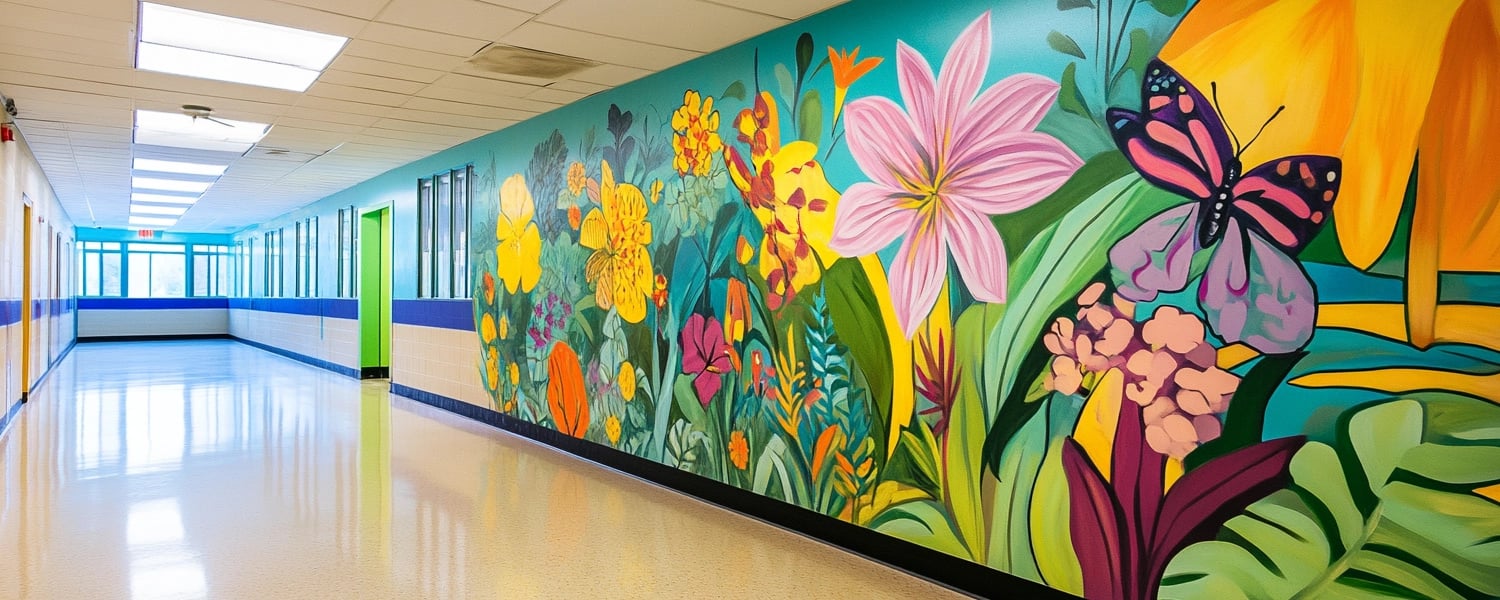
Garden Learning Stations: Our partner schools using HP Latex printers report garden markers lasting entire growing seasons without lamination. Plant identification signs, growth charts, and QR-linked information panels maintain clarity through irrigation cycles and weather events.
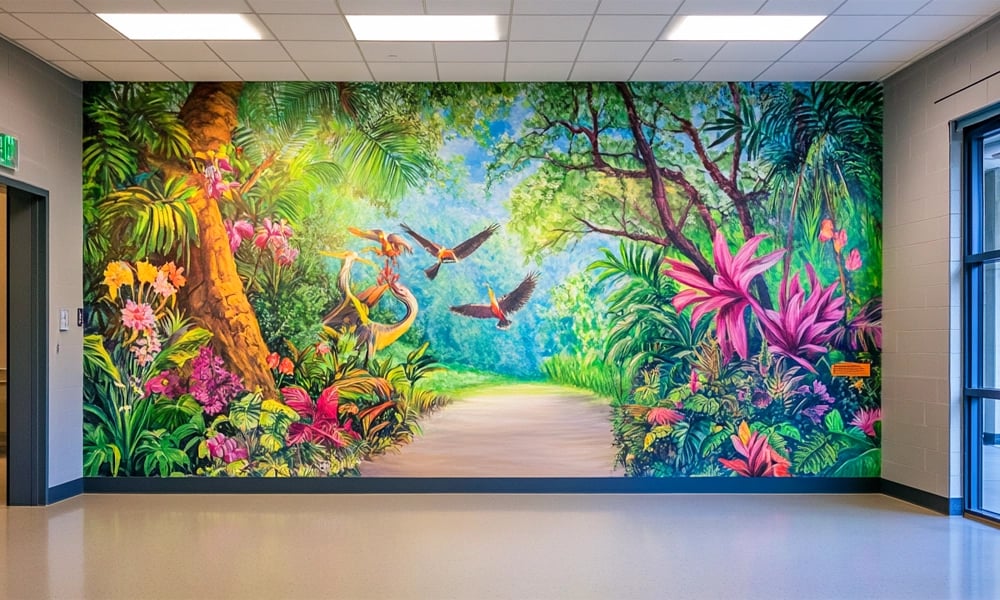
Weather Monitoring Displays: Creating durable data collection sheets and instruction panels for outdoor weather stations requires materials that won’t fade or deteriorate. Schools report latex-printed materials maintaining legibility for multiple academic years.
Implementation Checklist: Poster Maker Machines Outdoor Science Success
Material Selection
Choose weather-resistant substratesBest Practices
✓ Use vinyl substrates for ground contact ✓ Select matte finishes to reduce glare ✓ Consider adhesive options for vertical mounting ✓ Test materials in your specific microclimateDesign Considerations
Create high-contrast layoutsOptimization Tips
✓ Use sans-serif fonts at 48pt minimum ✓ Implement 3:1 contrast ratios ✓ Add UV-resistant overlaminate ✓ Include drainage holes for standing waterMaintenance Protocol
Schedule regular inspectionsLongevity Tips
✓ Monthly visual inspections ✓ Quarterly cleaning with mild soap ✓ Annual touch-up or replacement planning ✓ Document degradation patternsCost Analysis: Initial Investment vs. Long-Term Value
While latex-capable poster maker machines require higher initial investment, the extended outdoor lifespan delivers superior ROI for science programs.
Annual Replacement Frequency: • Inkjet outdoor displays: 3-4 times • Latex outdoor displays: 0.5-1 time
Total 3-Year Cost (50 displays/year): • Inkjet system: $3,850 (including reprints) • Latex system: $2,100 (fewer replacements)
Recommended Solutions for Science Programs
Based on extensive field testing and educator feedback, here are specific recommendations for schools implementing outdoor science displays:
Elementary Schools
Education Express 24″ Package A provides affordable entry into weather-resistant printing with included laminator for extra protection.
Middle Schools
Education Studio 36″ Package A+ offers water-resistant inks ideal for rotating outdoor experiments and seasonal displays.
High Schools
HP Latex 800 delivers professional-grade durability for permanent outdoor installations and research stations.
Real-World Success Stories
Bridgeforth Middle School in Virginia transformed their courtyard into an outdoor classroom using latex-printed station markers. After 18 months of continuous exposure, including a particularly harsh winter, their plant identification signs and data collection sheets remain fully legible. Similarly, coastal schools in the Outer Banks report that their tide pool education displays withstand salt spray and hurricane-force winds when properly mounted.
Ready to Weather-Proof Your Science Program?
Transform your outdoor learning spaces with durable, vibrant displays that last. Our education specialists can help you select the perfect color poster printer machines for your climate and curriculum needs.


